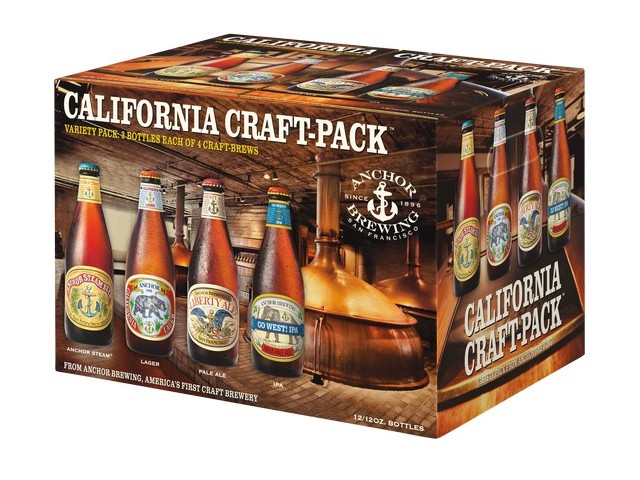The Closure Of Anchor Brewing Company: What Next For Craft Beer?

Table of Contents
The Economic Challenges Facing Craft Breweries
The craft beer industry, once a rapidly expanding sector, is now navigating a complex and challenging economic environment. Several factors contribute to this shift, threatening the viability of smaller breweries.
Increased Competition
The craft beer market has become incredibly saturated. While the initial growth fueled by consumer demand for unique and flavorful beers created a boom in new breweries, this has led to intense competition. The number of breweries in the US has exploded over the past two decades, only to see a recent leveling off and even declines in some regions.
- Larger brewery acquisitions: Large brewing corporations are increasingly acquiring smaller craft breweries, consolidating market share and squeezing out independent players.
- Marketing costs: Smaller breweries often struggle to compete with the marketing budgets of larger companies, limiting their reach and brand visibility.
- National distribution challenges: Expanding distribution beyond a regional market requires significant investment and logistical expertise, often beyond the capacity of smaller breweries.
Rising Production Costs
The cost of producing craft beer has steadily increased, impacting profitability. Several key factors are at play:
- Inflationary pressures: The rising costs of raw materials like hops and barley, coupled with increased energy prices and packaging costs, significantly impact a brewery's bottom line.
- Labor shortages: Finding and retaining skilled brewers and other staff has become increasingly difficult, driving up labor costs.
- Supply chain disruptions: Global events can disrupt the supply chain, leading to shortages and increased prices for essential ingredients and materials.
Changing Consumer Preferences
Consumer preferences are constantly evolving, and craft breweries must adapt to remain relevant.
- IPA dominance and diversification: While India Pale Ales (IPAs) once dominated the craft beer scene, consumer interest is shifting towards a wider range of styles, including seltzers, low-alcohol options, and hard kombucha.
- Health consciousness: The growing emphasis on health and wellness has led some consumers to seek lower-calorie and lower-alcohol beverages.
- Experiential consumption: Consumers are increasingly seeking unique experiences beyond simply drinking beer, placing more value on brewery taprooms and events.
The Future of Independent Craft Breweries
Despite the challenges, the future of independent craft breweries is not necessarily bleak. Survival requires adaptability, innovation, and a strong commitment to community.
Strategies for Survival
Smaller breweries can implement several strategies to enhance their chances of success:
- Hyperlocal focus: Concentrating on a local or regional market can reduce distribution costs and foster stronger community ties.
- Building brand loyalty: Creating a strong brand identity and fostering a loyal customer base through exceptional product quality and customer service is crucial.
- Creative marketing and branding: Utilizing creative marketing techniques to reach target audiences and differentiate themselves from competitors.
- Innovation in brewing: Experimenting with unique beer styles and brewing techniques can attract new customers and keep the brand exciting.
- Collaborative partnerships: Forming partnerships with other businesses or breweries can expand reach and create new opportunities.
The Role of Consolidation
The increasing trend of larger breweries acquiring smaller ones is a complex issue. While it can offer economies of scale and wider distribution for some, it raises concerns about the loss of unique brewing styles and regional character within the craft beer movement.
The Importance of Supporting Local Breweries
Consumers play a critical role in supporting independent craft breweries. By choosing to purchase locally brewed beers, attending brewery events, and recommending their favorites to friends, consumers actively contribute to the long-term sustainability of these vital community businesses.
Lessons Learned from Anchor Brewing's Closure
Anchor Brewing's closure offers valuable lessons for the entire craft beer industry:
Adaptability and Innovation
Anchor's struggles highlight the importance of adapting to changing market conditions and continuously innovating in brewing techniques and business strategies. Failing to keep up with evolving consumer tastes and preferences can lead to stagnation and ultimately, failure.
Effective Marketing and Brand Management
Building a strong brand and effectively communicating its story is crucial in a competitive market. While Anchor had a rich history, maintaining relevance through effective marketing and community engagement is essential.
Financial Management and Strategic Planning
Thorough financial management and strategic planning are paramount. Diversifying revenue streams, maintaining strong financial controls, and having a clear long-term vision are vital for the long-term sustainability of any craft brewery.
Conclusion
The closure of Anchor Brewing Company serves as a wake-up call for the craft beer industry. The challenges are significant, including increased competition, rising production costs, and evolving consumer preferences. However, the future of craft beer is not predetermined. Independent craft breweries can thrive by focusing on local markets, building strong brands, embracing innovation, and actively engaging with their communities. The future of craft beer depends on our collective support for the independent breweries that make our communities unique. Explore the diverse world of local craft beer today!

Featured Posts
-
 Ipa Apozimiosi 5 Ekatommyrion Dolarion Stin Oikogeneia T Hymatos Kapitolioy
May 29, 2025
Ipa Apozimiosi 5 Ekatommyrion Dolarion Stin Oikogeneia T Hymatos Kapitolioy
May 29, 2025 -
 Morgan Wallen And Post Malone Hello Kitty Plushies Now Available
May 29, 2025
Morgan Wallen And Post Malone Hello Kitty Plushies Now Available
May 29, 2025 -
 Every Air Jordan Sneaker Releasing In June 2025 A Complete Guide
May 29, 2025
Every Air Jordan Sneaker Releasing In June 2025 A Complete Guide
May 29, 2025 -
 Space X Falcon 9 28 Starlink Satellites Launched In Successful Mission
May 29, 2025
Space X Falcon 9 28 Starlink Satellites Launched In Successful Mission
May 29, 2025 -
 Rubios European Envoy Role Under Trump Administration
May 29, 2025
Rubios European Envoy Role Under Trump Administration
May 29, 2025
